Fashion has always been a canvas for creativity, a medium where art meets practicality, and where the boundaries of expression are continually pushed. Among the avant-garde trends that have emerged in recent years, “Human Anatomy Sweaters” represent a fascinating intersection of art, science, and fashion. These sculptural knitwear pieces are more than just garments; they are wearable art that intricately mirrors the human form, transforming the body into a living sculpture. In this article, we delve deep into the world of sculptural knitwear, exploring the artistry, significance, and impact of human anatomy-shaped sweaters.
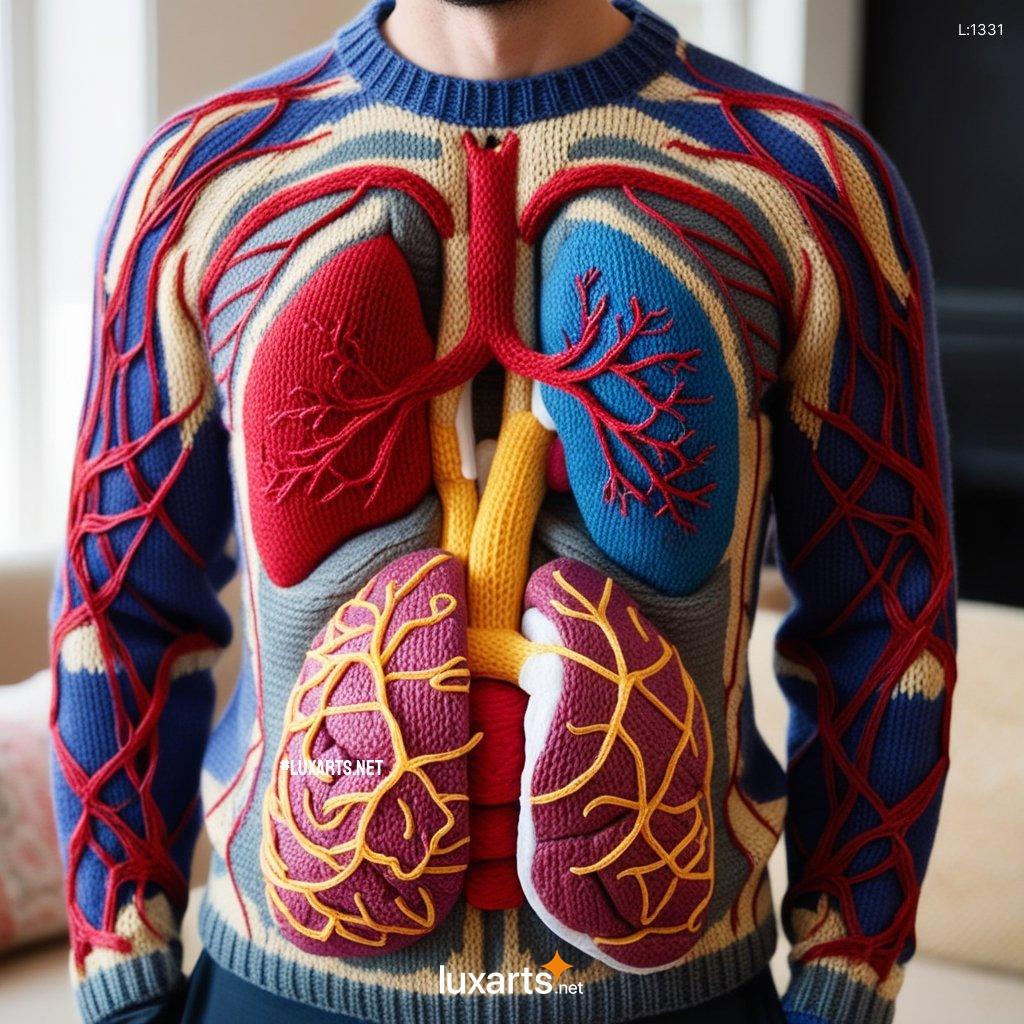
Introduction: The Art of Sculptural Knitwear
Fashion as an Art Form
Fashion has long transcended its functional roots, evolving into a platform for artistic expression. Designers worldwide continuously explore the limits of material, form, and concept, creating pieces that challenge conventional ideas about clothing. While traditional fashion primarily focuses on aesthetics and function, sculptural knitwear ventures into the realm of art, blurring the lines between wearable garments and artistic sculptures.
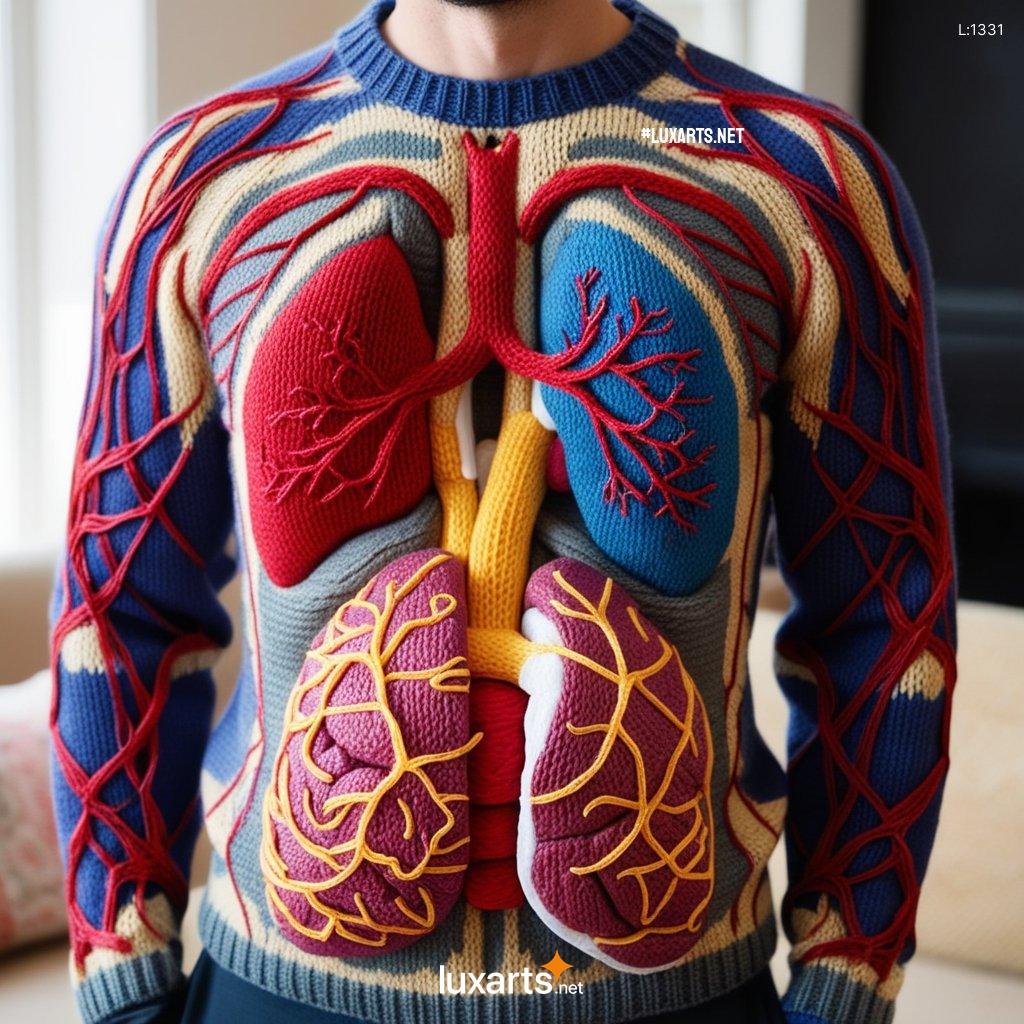
The Rise of Human Anatomy Sweaters
One of the most intriguing trends within sculptural knitwear is the emergence of human anatomy-shaped sweaters. These garments are meticulously designed to replicate the intricate details of the human body, from muscles and bones to veins and organs. By doing so, they turn the wearer into a living, breathing piece of art. This trend not only showcases the technical prowess of designers but also invites conversations about the human body, identity, and the role of fashion in society.
The Purpose of This Article
This article aims to explore the world of human anatomy sweaters, analyzing the artistic inspiration behind them, the techniques used in their creation, and their cultural and social significance. By understanding the deep connection between fashion and anatomy, we can appreciate these pieces not just as garments, but as a powerful form of artistic expression.
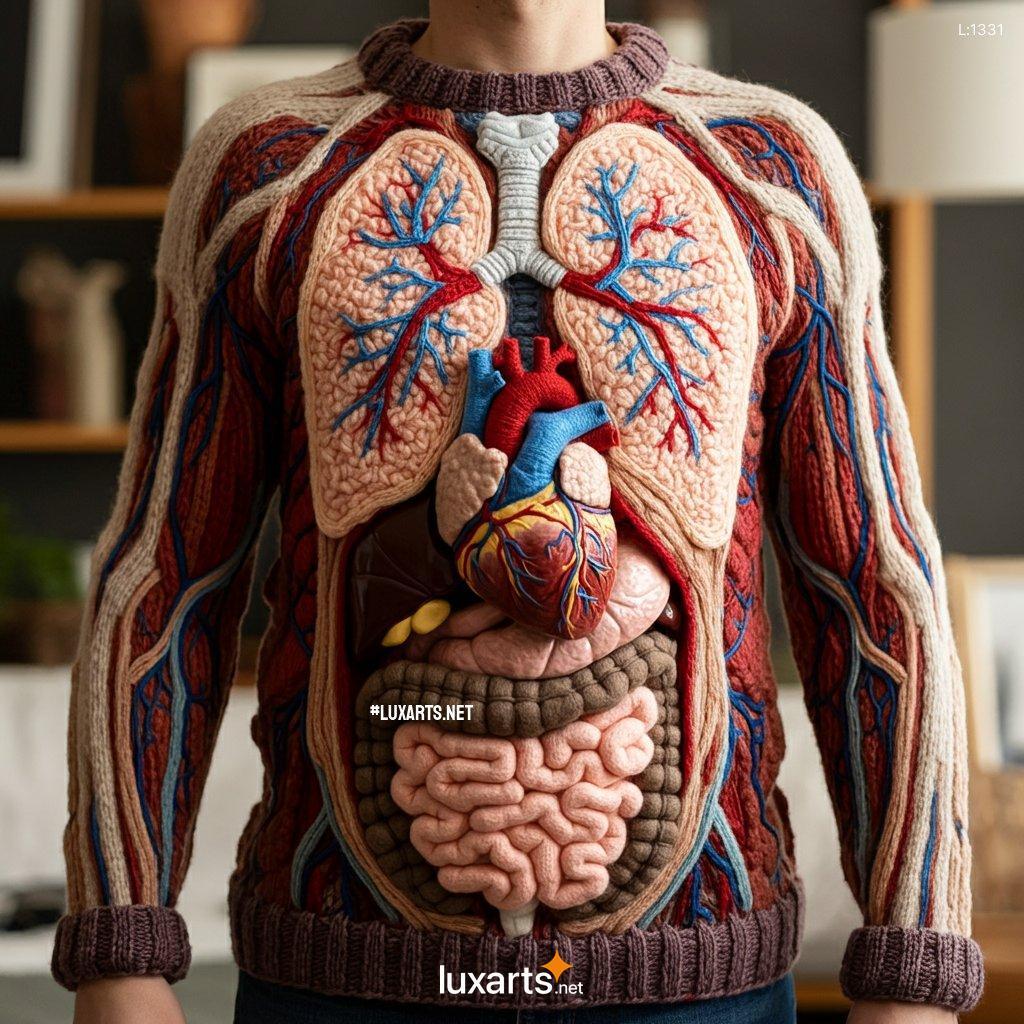
The Artistic Vision Behind Human Anatomy Sweaters
Inspiration from the Human Form
The human body has been a subject of artistic fascination for centuries. From classical sculptures to Renaissance paintings, artists have always sought to capture the beauty, complexity, and vulnerability of the human form. Human anatomy sweaters draw on this rich tradition, using the body as both inspiration and canvas. These pieces often emphasize the natural contours, textures, and structures of the body, celebrating the inherent beauty of our physical selves.
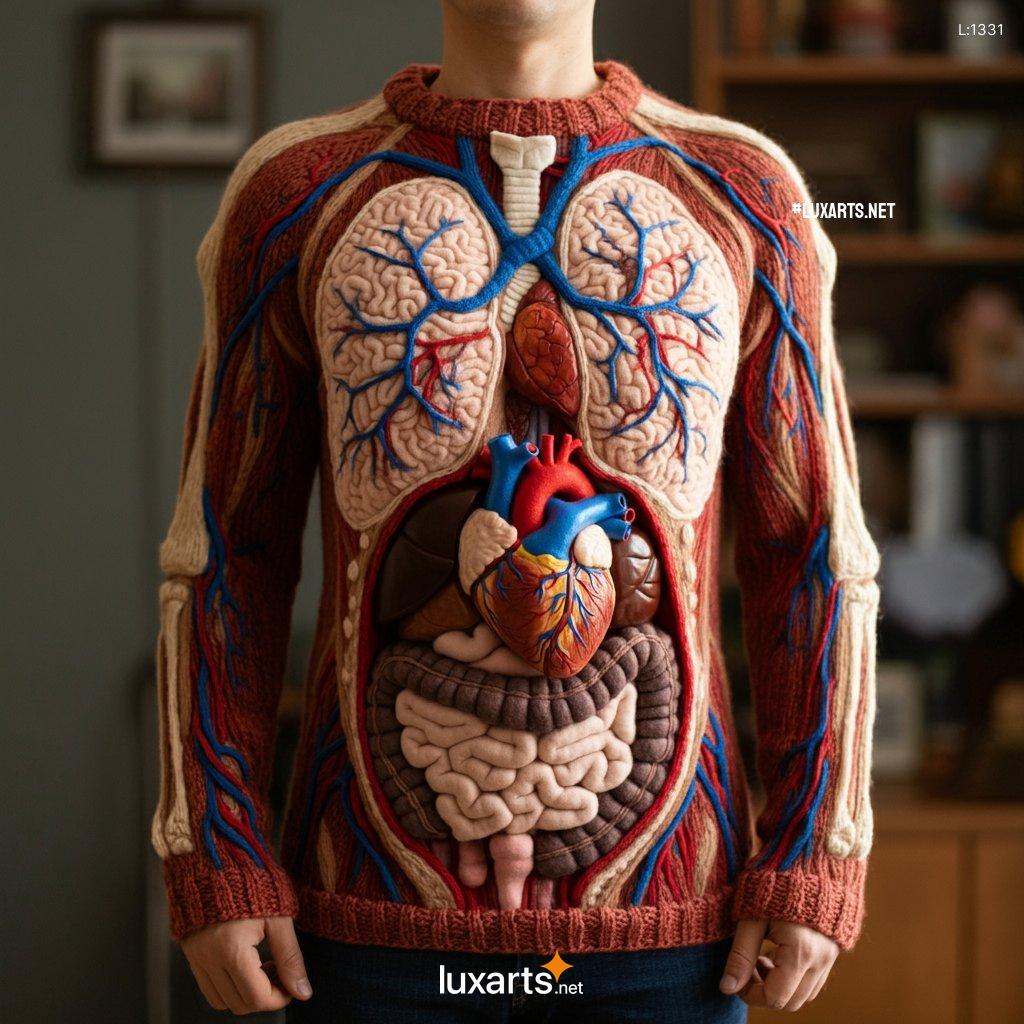
The Intersection of Art, Science, and Fashion
Human anatomy sweaters represent a unique fusion of art, science, and fashion. Designers must have a deep understanding of human anatomy to accurately replicate the body’s structures in knitwear. This requires a blend of artistic vision and scientific knowledge, as well as mastery of knitting techniques that allow for intricate detailing. The result is a garment that not only looks like the human body but also tells a story about the intersection of these three disciplines.
The Role of Technology in Creation
Advancements in technology have played a crucial role in the development of sculptural knitwear. 3D modeling and digital knitting techniques allow designers to create highly detailed and precise representations of the human body. These tools enable the creation of complex patterns and textures that would be impossible to achieve by hand. However, the artistry still lies in the designer’s ability to translate these digital designs into tangible, wearable pieces that resonate with viewers and wearers alike.
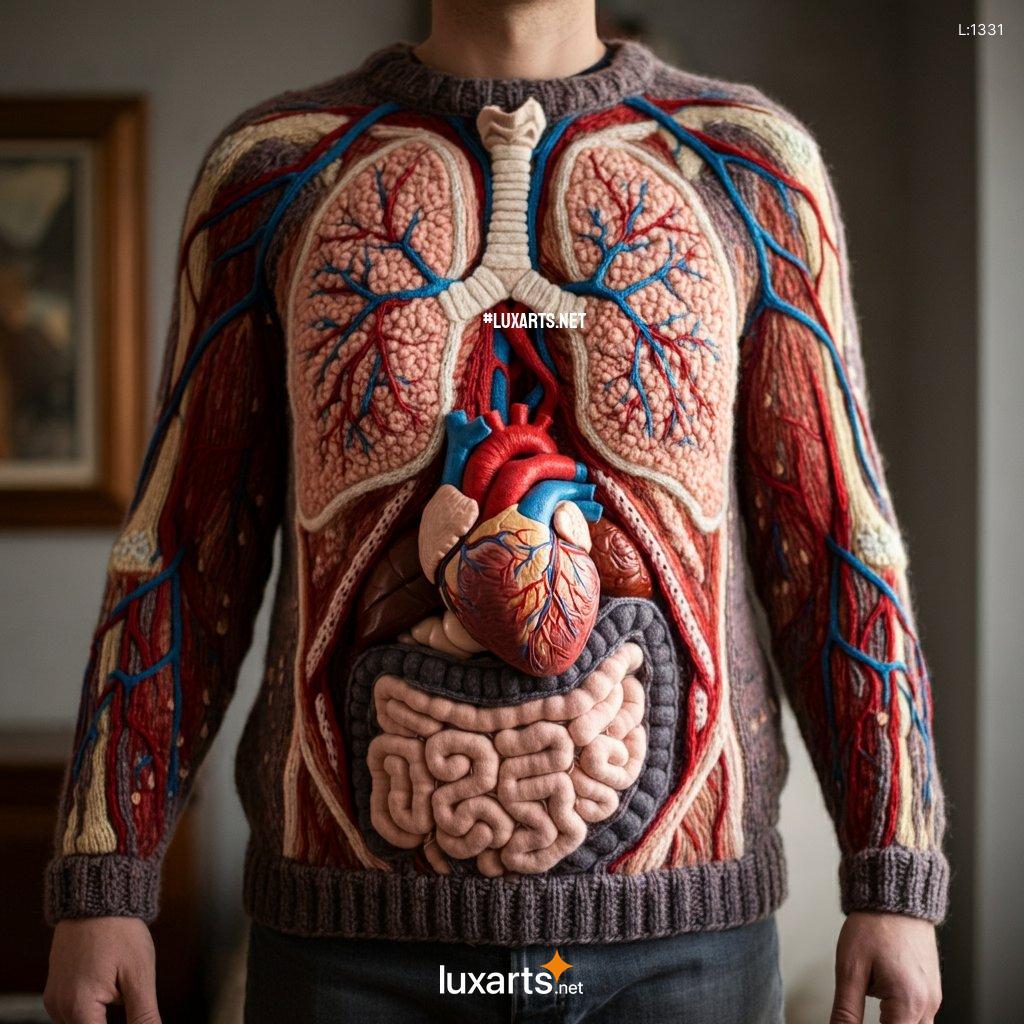
Techniques and Materials: Crafting the Perfect Anatomy Sweater
Knitting as a Sculptural Medium
Knitting has traditionally been associated with comfort and practicality, but in the hands of innovative designers, it becomes a medium for sculpture. The process of creating human anatomy sweaters involves manipulating yarn in ways that mimic the structure of muscles, bones, and other anatomical features. Designers often experiment with different stitches, tensions, and layering techniques to achieve the desired effect, turning a flat piece of fabric into a three-dimensional representation of the human body.
Choice of Materials
The choice of materials is critical in the creation of human anatomy sweaters. Designers often use a variety of yarns to achieve different textures and effects. For example, fine, delicate yarns might be used to represent veins or sinew, while thicker, more robust yarns could be used to mimic muscles or bones. The color palette is equally important, with many designers opting for realistic tones that closely resemble the natural colors of the human body. Some may even use dyes or paints to add depth and detail to the finished piece.
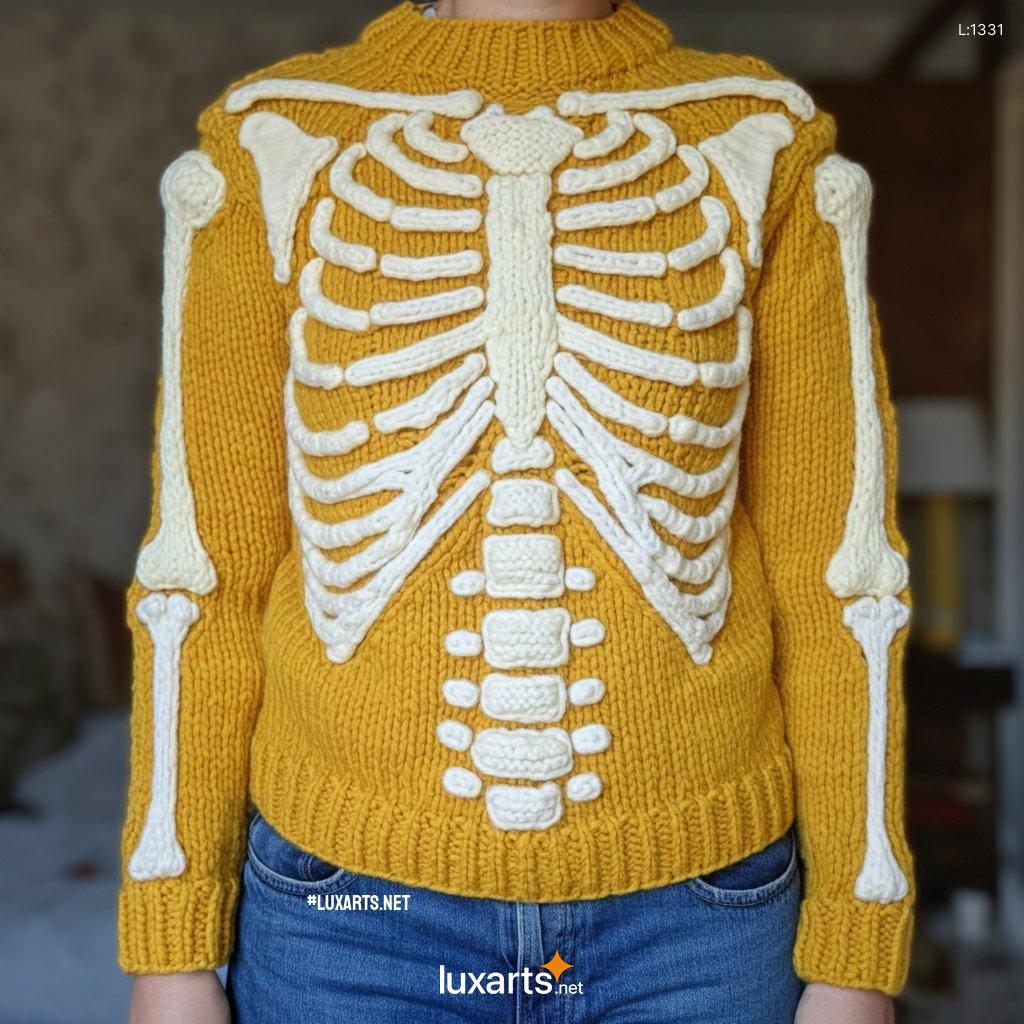
The Complexity of Construction
Creating a human anatomy sweater is an intricate process that requires careful planning and execution. Designers typically start with a detailed sketch or model of the human body, identifying the key features they want to highlight. They then translate this design into a pattern, which serves as a blueprint for the knitting process. The actual knitting can take weeks or even months, depending on the complexity of the design and the level of detail required. The final step is assembling the different pieces into a cohesive garment that maintains its shape and structure when worn.
The Role of Handcraftsmanship
While technology plays a significant role in the creation of human anatomy sweaters, the artistry of handcraftsmanship cannot be overlooked. Many designers choose to hand-knit these garments, allowing for greater control over the final product. Handcrafting also adds a personal touch to each piece, making it truly unique. The time and effort involved in handcrafting these sweaters also add to their value, both as fashion items and as works of art.
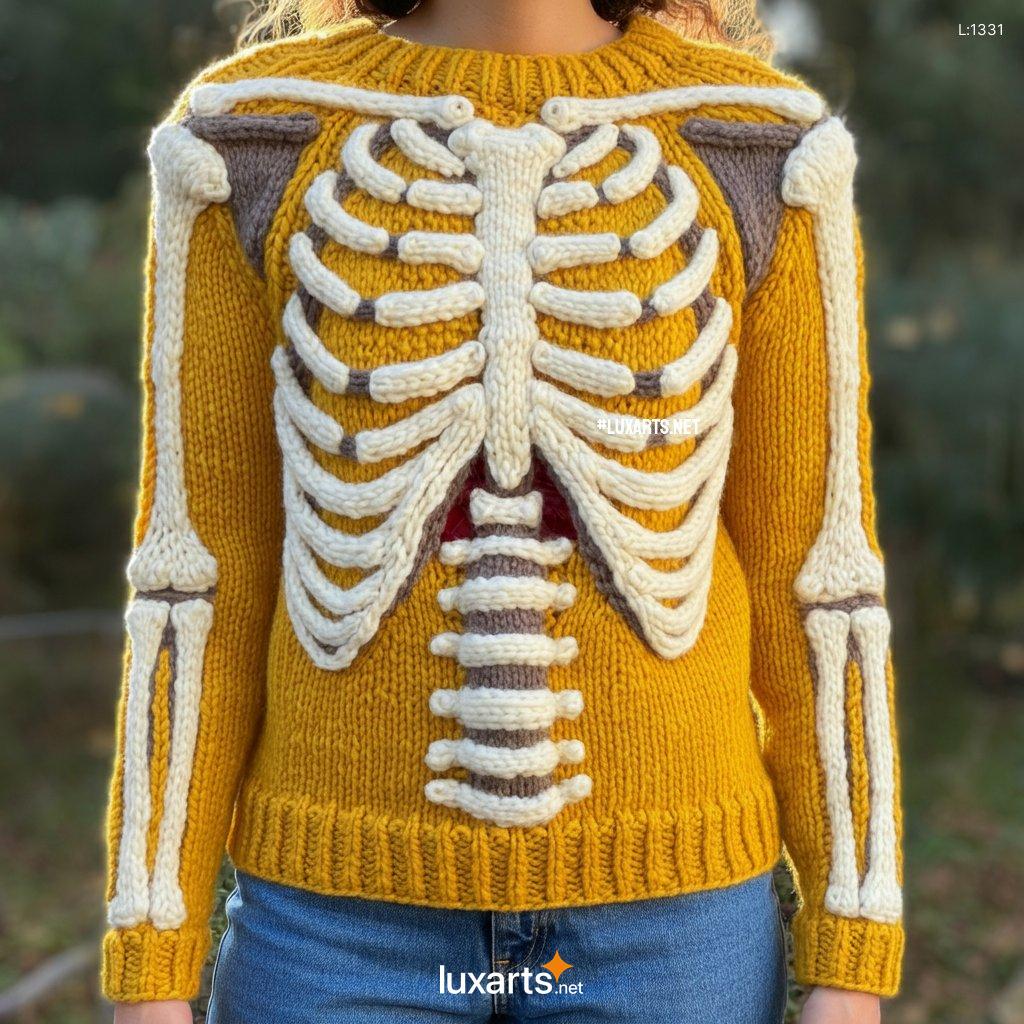
Cultural and Social Significance of Human Anatomy Sweaters
Challenging Traditional Beauty Standards
Human anatomy sweaters challenge traditional notions of beauty and fashion. By highlighting the raw, unfiltered aspects of the human body, these garments encourage viewers to rethink their perceptions of beauty. In a world where fashion often promotes idealized, unattainable body standards, human anatomy sweaters celebrate the diversity and complexity of the human form. They serve as a reminder that every body is unique and that there is beauty in our differences.
Conversations About Identity and the Human Body
These sculptural knitwear pieces also spark important conversations about identity and the human body. By wearing a human anatomy sweater, the wearer makes a statement about their relationship with their body and how they want to be perceived. These garments can be seen as a form of self-expression, allowing individuals to embrace their physicality in a way that is both empowering and artistic. Additionally, they can serve as a commentary on the ways in which society views and treats the human body, particularly in relation to issues like body image, health, and aging.
The Influence of Surrealism and Body Horror
The aesthetic of human anatomy sweaters is often influenced by surrealism and body horror, two artistic movements that explore the boundaries of the human form. Surrealism, with its emphasis on the dreamlike and the uncanny, often portrays the body in unconventional and abstract ways. Body horror, on the other hand, delves into the grotesque and unsettling aspects of the human body, exploring themes of transformation, decay, and the fragility of life. Human anatomy sweaters draw on these influences to create garments that are both beautiful and unsettling, challenging viewers to confront their own perceptions of the body.
The Role of Fashion in Social Commentary
Fashion has always been a powerful tool for social commentary, and human anatomy sweaters are no exception. These garments can be seen as a critique of the fashion industry’s obsession with perfection and conformity. By showcasing the raw, unfiltered aspects of the human body, they challenge the notion that beauty is synonymous with flawlessness. Instead, they celebrate the imperfections and intricacies that make each body unique. In doing so, they encourage a more inclusive and accepting view of beauty, one that embraces diversity and authenticity.
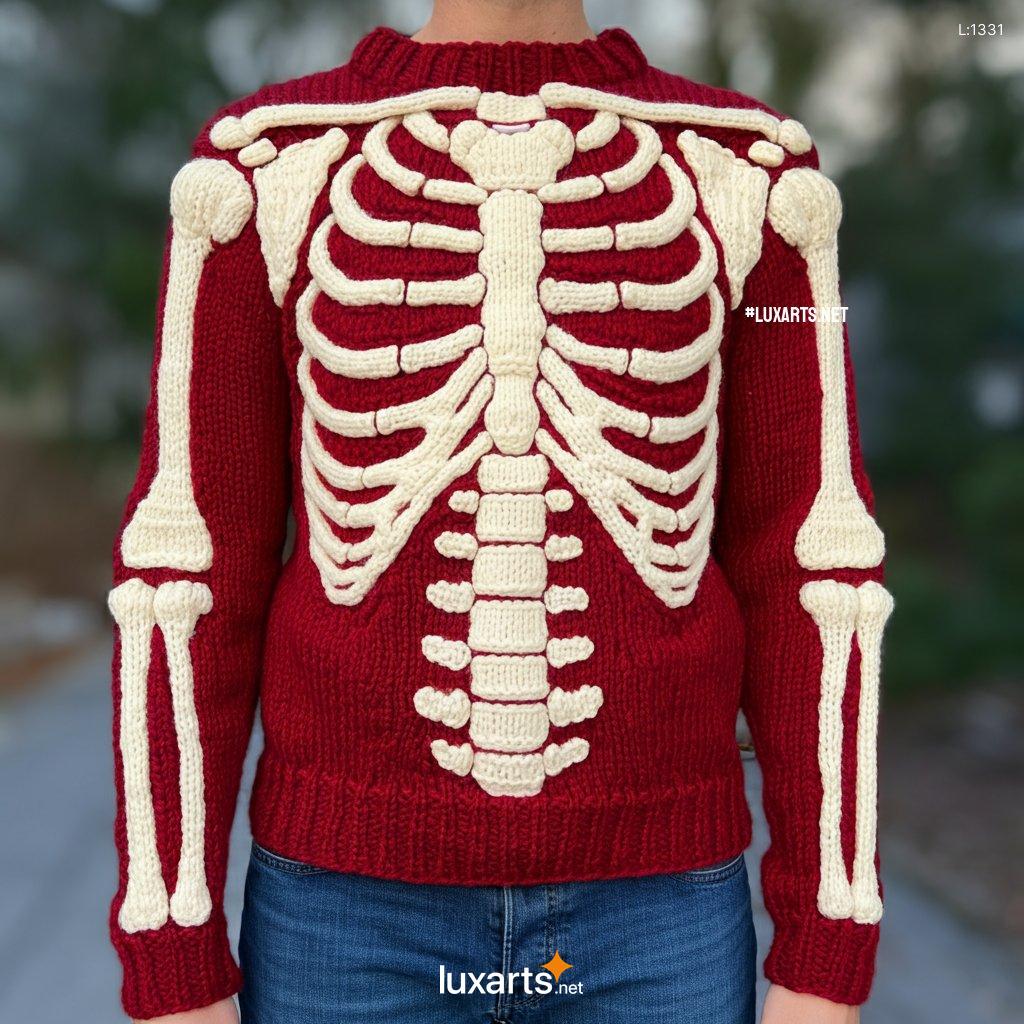
The Future of Sculptural Knitwear: Innovation and Impact
Emerging Designers and Brands
As the trend of human anatomy sweaters continues to grow, more designers and brands are experimenting with sculptural knitwear. Emerging designers are pushing the boundaries of what is possible with knitting, exploring new techniques and materials to create even more intricate and lifelike representations of the human body. Established fashion houses are also taking notice, incorporating elements of sculptural knitwear into their collections and bringing this avant-garde trend to a wider audience.
Sustainability and Ethical Considerations
As with any fashion trend, the sustainability and ethical implications of human anatomy sweaters are important to consider. Many designers are exploring ways to create these garments using sustainable materials and practices, such as using organic or recycled yarns, minimizing waste, and supporting fair labor practices. Additionally, the slow fashion movement, which emphasizes quality and longevity over mass production, aligns well with the artisanal nature of sculptural knitwear. By creating garments that are designed to last and be cherished, designers can contribute to a more sustainable and ethical fashion industry.
The Impact on the Fashion Industry
The rise of human anatomy sweaters and sculptural knitwear has the potential to significantly impact the fashion industry. By challenging traditional notions of beauty and fashion, these garments encourage designers and consumers alike to think more critically about the role of clothing in society. They also highlight the importance of craftsmanship and artistry in fashion, emphasizing the value of unique, handmade pieces over mass-produced items. As the fashion industry continues to evolve, sculptural knitwear may pave the way for more innovative and thoughtful approaches to design and production.
The Role of Technology in Future Developments
Technology will continue to play a crucial role in the future of sculptural knitwear. Advances in digital knitting, 3D printing, and other technologies will enable designers to create even more complex and detailed garments. These innovations could also make sculptural knitwear more accessible to a wider audience, allowing for greater experimentation and creativity within the fashion industry. Additionally, the integration of smart textiles and wearable technology could add new dimensions to human anatomy sweaters, allowing them to respond to the wearer’s movements or environment in real time.
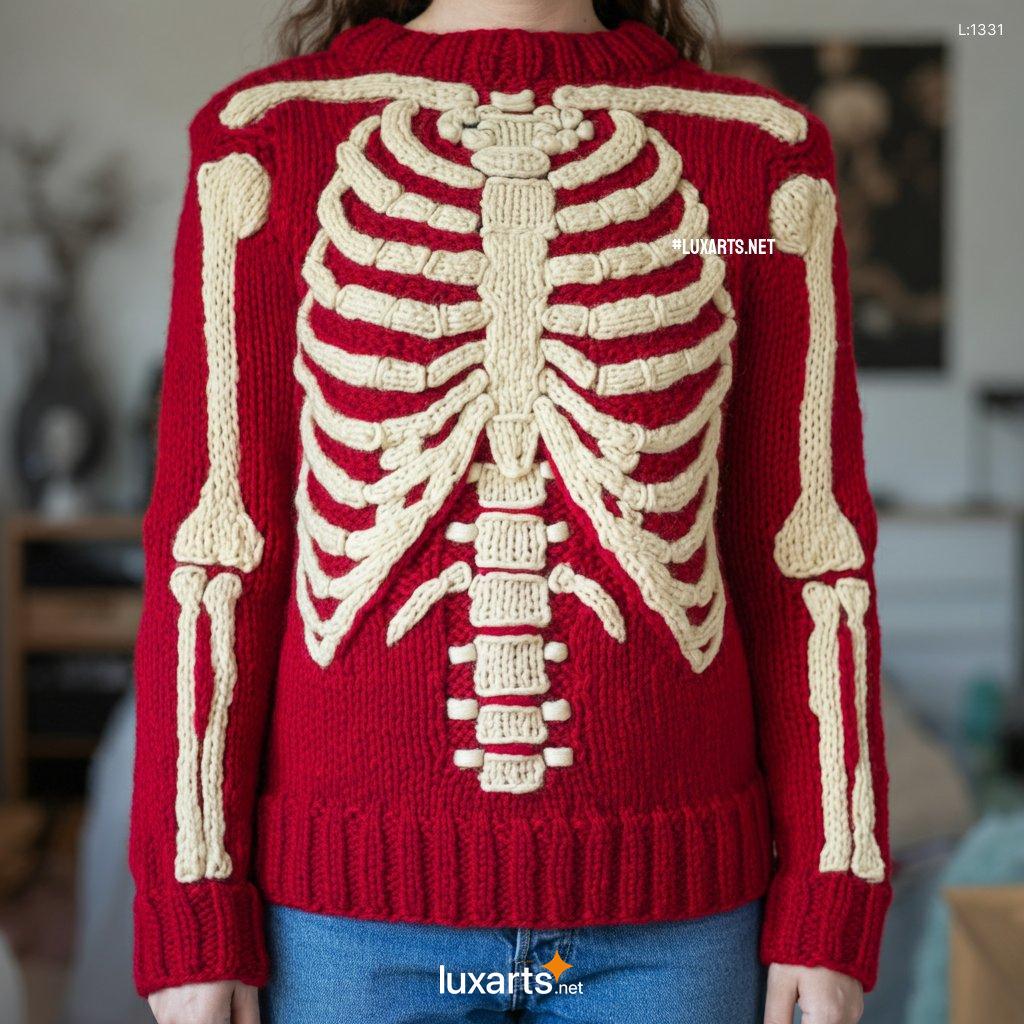
Wearing Art: The Experience of Human Anatomy Sweaters
The Psychological Impact of Wearing Sculptural Knitwear
Wearing a human anatomy sweater is a unique experience that goes beyond simply putting on a piece of clothing. These garments have a psychological impact on both the wearer and the viewer. For the wearer, donning a human anatomy sweater can be an empowering act of self-expression, allowing them to embrace and celebrate their body in a new way. It can also evoke a sense of vulnerability, as the garment exposes the inner workings of the body, blurring the line between what is private and what is public.
Reactions from the Public
Human anatomy sweaters are undeniably attention-grabbing, and wearing one is likely to elicit strong reactions from others. Some may find these garments fascinating and beautiful, while others may feel discomfort or unease at the sight of a body so vividly represented in knitwear. This range of reactions is part of what makes human anatomy sweaters so compelling; they provoke thought and conversation, challenging viewers to confront their own feelings about the human body and the ways in which it is depicted.
The Role of Human Anatomy Sweaters in Performance Art
Human anatomy sweaters are not just for everyday wear; they have also found a place in the world of performance art. Artists and performers use these garments to explore themes of identity, body image, and the human condition. In a performance setting, the sweaters become more than just clothing; they are a tool for storytelling and a means of connecting with the audience on a deeper level. Whether worn in a gallery, on stage, or in public spaces, human anatomy sweaters bring a new dimension to the art of performance.
Personalizing the Experience
For those who choose to wear human anatomy sweaters, the experience can be deeply personal. Many designers offer custom-made pieces that are tailored to the wearer’s body, ensuring a perfect fit and a unique expression of their anatomy. This level of personalization adds to the garment’s significance, turning it into a one-of-a-kind piece that reflects the wearer’s identity and relationship with their body. Wearing a human anatomy sweater is not just about making a fashion statement; it is about embracing one’s physicality and celebrating the artistry of the human form.
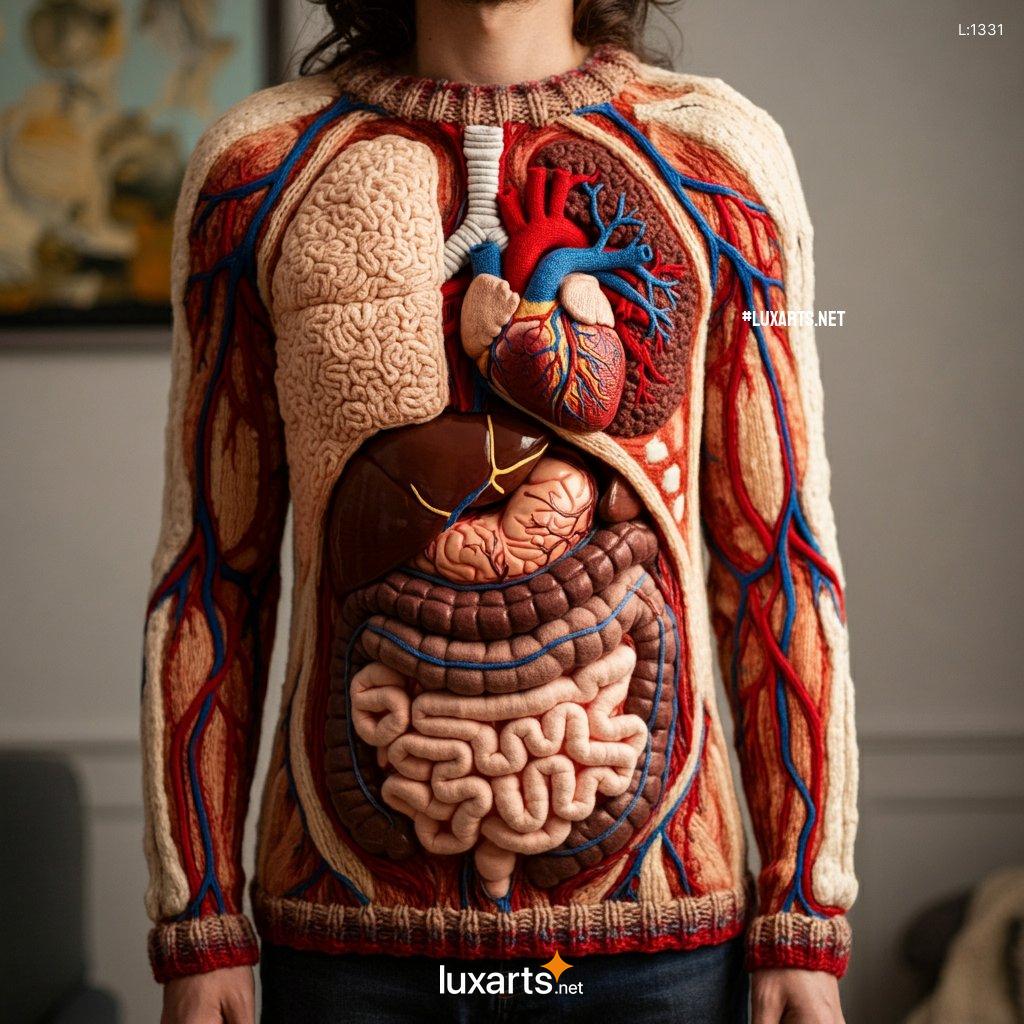
Conclusion: The Power of Sculptural Knitwear
Reflecting on the Art of Human Anatomy Sweaters
Human anatomy sweaters represent a powerful fusion of art, science, and fashion. These sculptural knitwear pieces challenge our perceptions of the human body, inviting us to see beauty in its complexity and imperfection. They push the boundaries of what is possible in fashion, turning garments into living sculptures that tell a story about identity, body image, and the role of clothing in society.
The Lasting Impact on Fashion and Art
As the trend of human anatomy sweaters continues to grow, its impact on the fashion industry and the art world will only become more profound. These garments have already sparked important conversations about beauty, body image, and the intersection of art and fashion. They have also highlighted the importance of craftsmanship and creativity in an industry that is often driven by mass production and commercialism.
Embracing the Future of Wearable Art
The future of sculptural knitwear is full of possibilities. As technology advances and designers continue to push the boundaries of what is possible, we can expect to see even more innovative and thought-provoking pieces that challenge our perceptions of clothing and the body. Human anatomy sweaters are just the beginning of a new era of wearable art, one that celebrates the uniqueness of the human form and the power of fashion as a medium for artistic expression.
In a world where fashion often prioritizes trends and commercial appeal, human anatomy sweaters stand out as a testament to the enduring power of creativity and individuality. They remind us that fashion can be more than just clothing; it can be a form of art that speaks to our deepest emotions and experiences. By embracing the art of sculptural knitwear, we can celebrate the beauty of the human body in all its forms and continue to push the boundaries of what fashion can be
NOTE: All images in this post are AI-generated and intended solely for inspiration. These are not real products available for sale, and we do not operate any online store or website for purchases.



